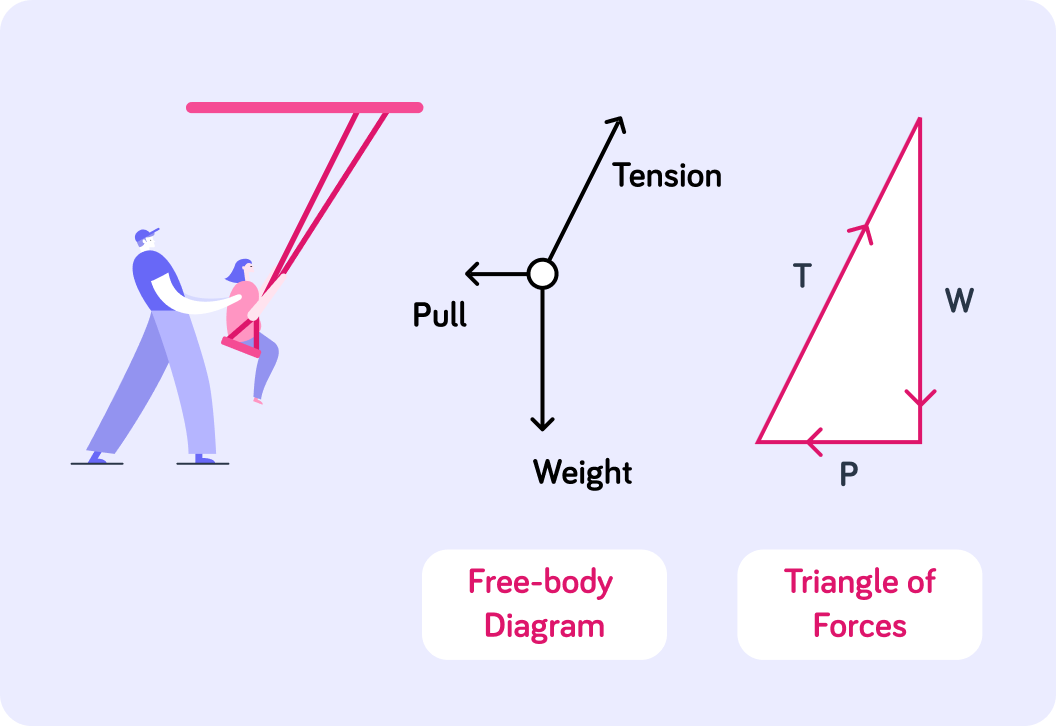YOU ARE LEARNING:
Vector Diagrams: Equilibrium

Vector Diagrams: Equilibrium
A visual representation of the sum of all acting forces can show a resultant force of zero in vector diagrams.
If all of the forces acting on an object are balanced, the object is said to be in a state of ...

If all of the forces acting on an object combine to give a resultant force of zero, the object is in equilibrium. The object may be stationary, or moving at a steady speed in a constant direction. Equilibrium arises when there is zero resultant force acting on an object.
In a vector diagram, if three forces form a triangle when drawn to scale and arranged from tip to tail, the forces are balanced and there is no resultant force. The object must be in equilibrium.
A child is on a swing. At this precise moment, the child is ...
A) moving backwards. B) in equilibrium. C) moving forwards.


Are you able to see whether the forces are balanced from the free body diagram? Answer yes or no.


What is important when drawing a vector diagram of three forces acting upon an object? Pick all the options you think are correct.

You can select multiple answers
If you are asked to find the missing force given that an object is in equilibrium, be sure to draw the missing force in the right direction; from the tip of the last force, to the tail of the first.
This is sometimes confusing as it is the opposite direction to how you would draw a resultant force!
You have found the missing force of an object in equilibrium by drawing a vector from the tip of the last force to the tail of the first. How would you find the magnitude of the force?

